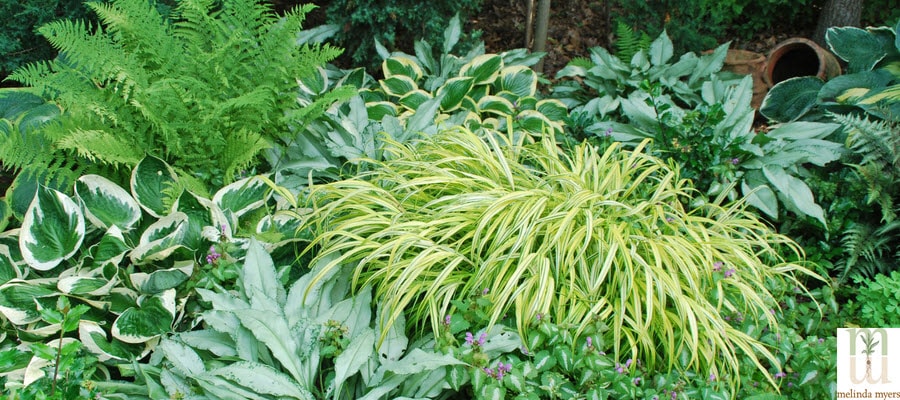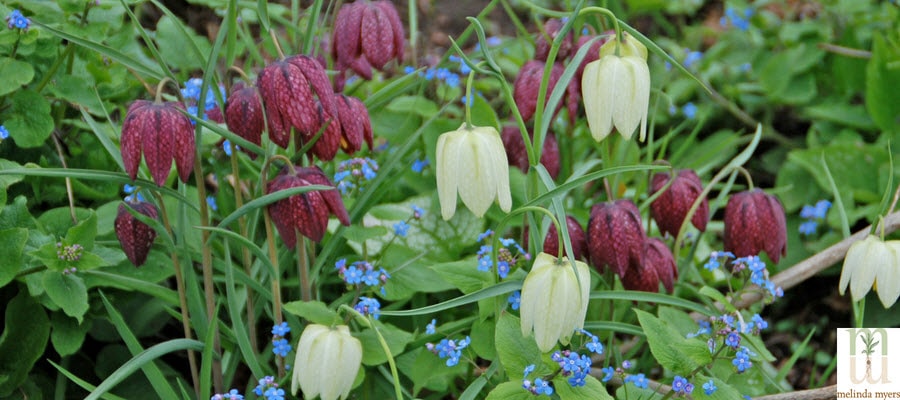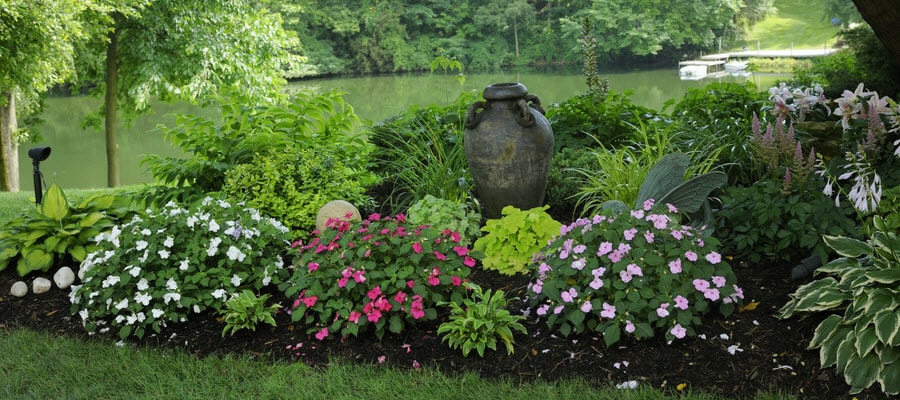How to Create a Shade Garden - Finding Plants for Those Shady Spots in The Landscape
- horticulturist and gardening expertJune 9, 2018
We all seek a little relief from the summer heat under the shade of a favorite tree. But as gardeners, we often cringe when faced with brightening those sun challenged spots in the yard. Take heart, your landscape may receive more sunlight than you suspect and if not, there are quite a few shade-tolerant plants you can grow.

How to Create a Shade Garden:
Start by evaluating the sun and shade patterns in your gardens. Take a look at the amount of sunlight different areas received throughout the day and during different times of the year. Sun-loving bulbs need lots of sun early in the season before most trees leaf out, while other plants need sunlight throughout the growing season. If you work all day, you may assume those shady spots in the morning and evening never light up, so take some time to evaluate the sun and shade conditions mid-day and throughout the season.
Make a list of plants that you have had success with and those that failed in the shady location you are landscaping. I call these indicator plants and use these to help gardeners select or avoid plants with similar light requirements. For example, if peonies bloom and tomatoes produce fruit this area receives quite a bit of sunlight, perhaps more than you thought.
If your landscape is too shady to grow the plants you desire, try increasing the sunlight reaching ground level plantings. Hire a certified arborist to thin the overhead tree canopy. They have the training and experience to do the job safely and correctly. You don’t want to damage the health and structure of established trees, so critical to the beauty of your landscape.
Do not top your trees to increase the amount of light reaching the ground below. Cutting large branches back severely to small side shoots or buds results in a proliferation of weak stems. This poor growth is more subject to storm damage and at greater risk of disease.
Start planning the garden. Look for plants that tolerate the sunlight and soil in the proposed garden location as well as your climate. Look for those that provide attractive foliage all season and flowers at various times.

(Above Image: Checkered Lily and Siberian Brunnera)
Once you’ve made your selection and planted your garden, you need to adjust the care to compensate for the limited light conditions. Plants growing under large trees or overhangs need to be watered more often, especially the first year or two until they become established. The dense canopy of many trees and impervious overhangs prevent rainfall from reaching the ground below. Plus, the extensive root systems of trees and shrubs absorb much of the rainfall that does make it through, so check soil moisture several times a week and water thoroughly as needed.
Tree and shrub roots can also compete with plantings for nutrients. Use a low nitrogen, slow release fertilizer like Milorganite that promotes steady above and belowground growth. The 85% organic material further helps improve the soil. Apply slow release fertilizers at planting and once again for annuals midseason. Fertilize new and established perennials in early spring and again in mid-summer as needed.
Avoid high nitrogen, quick release fertilizers that promote lush succulent growth that is more susceptible to insects and diseases. And with limited light as a potential plant stressor, this can increase the risk of problems.

When planting under or near trees be careful not to kill them when creating your shade garden. Don’t cut or remove surface roots. This creates entryways for insects and diseases. Adding as little as an inch of soil over the roots can kill some tree species. And deep cultivation can damage the feeder roots critical for water and nutrient absorption since the majority grow within the top 12 inches of soil.
Instead set containers among perennial shade tolerant groundcovers or on mulched beds to add a bit of greenery, seasonal color, and vertical interest. Or sink a few nursery pots in the ground. Then pot up a few shade tolerant annuals and set them in the sunken pots. You’ll only disturb the roots once and need to water less since the containers are insulated by the surrounding soil.
If there’s too much shade to grow even shade-loving plants, consider mulch to keep the mud in place, permeable pavers and a table or chair for relaxing, or a few steppers and moss to create a moss garden.
Here is a list of just a few shade-tolerant perennials to consider. As always make sure the plants also tolerate your region’s climate. And once you start reviewing the internet and plant catalogs you may find it difficult to narrow down your choices to fit in your new shade garden.
Woodland Wildflowers
Spring Flowering Bulbs
Grape hyacinths
Checkered lilies
Camassia
Daffodils
Virginia Bluebells
Perennials
Ajuga – blue flowers in spring and a variety of cultivars with interesting foliage
Astilbe – lacy leaves topped with white, red, lavender flowers in early, mid or late summer
Barrenwort (Epimedium) – early spring blooms, delicate heartshaped leaves that turn red in fall
Bleeding Heart, Common – a traditional spring flowering favorite that dies back mid summer
Bleeding Heart, Fringed - low growing leaves stay green all summer and produces additional blooms sporadically throughout the summer
Bugbane/Snakeroot (Actaea) – tall plants with spikes of white flowers in summer or fall
Columbine – a spring bloomer and hummingbird favorite flower
Coral Bells – a wide array of foliage colors available with white, pink, rose or coral flowers
Deadnettle (Lamium) – vigorous plant, spring flowers with plain or variegated foliage
Ferns – select those suited to your climate
Foam flower (Tiarella) – white bottlebrush flowers with attractive foliage
Ginger (Asarum) – the native ginger is vigorous but dies back in winter while the European type is evergreen
Hostas – white or lavender flowers but usually selected for the foliage which is available in a variety of sizes, leaf color and variegation
Japanese Forest Grass (Hakonechloa) mounds of variegated foliage adds texture to the shade
Lungwort – low growing green or variegated foliage and white, pink or blue spring flowers
Sedges – grass like plants with green or variegated leaves
Siberian Bugloss (Brunnera) – blue forget-me-not blooms in spring and heartshaped green or variegated leaves
Variegated Solomon Seal – 2 to 4 feet tall, green leaves with creamy edge, white bell shaped flowers and red berries you shouldn’t eat
Toadlily (Tricyrtis) – small orchid-like flowers appear in fall

